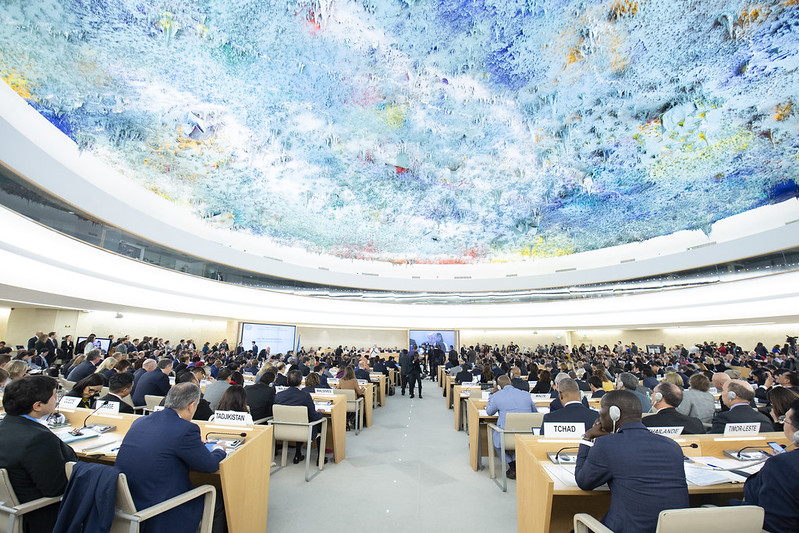Burundi is often considered as a conflict-affected country where Hutu and Tutsi are opposed to each other because of past episodes of violence between them. The social reality of people in the country is much more complex than this, but it still too often read in terms of the Hutu/Tutsi divide, writes Antea Paviotti.
Since independence, cycles of violence have repeatedly taken place between Hutu and Tutsi in Burundi. These two social groups, called amoko (singular ubwoko) in Kirundi, the main language spoken in the country, were the target of violence in 1965, 1969, 1972, 1988, and 1993. In 2000, the Arusha Peace Agreement institutionalised the presence of Hutu, Tutsi, and Twa at every level of the state institutions, allowing for the “de-ethnicisation” of political competition. In 2015, another outbreak of violence took place, this time linked to the announcement of President Nkurunziza’s candidacy for a third presidential term. Then, narratives emerged around the “ethnic” motivations of Nkurunziza’ opponents, who would have not tolerated having a Hutu president any longer.
Due to the memory of past violence, a boundary exists today between Hutu and Tutsi in Burundi. However, this is just one of the several social boundaries that exist in the country.
Deconstructing the ubwoko in Burundi
To avoid binary readings of social realities, boundaries and groups need to be deconstructed and reconsidered. Firstly, boundaries are not insurmountable barriers. They help people to identify a “them” and an “us”, which responds to the human need for identity and belonging but does not automatically imply the existence of tensions or conflict between “us” and “them”.
Different boundaries present different characteristics. They can be thicker or thinner and have different levels of rigidity and porosity. Boundaries can also be of different types, as people define each other on different levels (political, economic, religious, sports…) in different spaces and times. There is never only one “us” and “them” but always several “us” and several “them”.
Individuals have “multiple belongings”, to use an expression by Amin Maalouf, and the importance of these different belongings varies throughout one’s life trajectory. Boundaries are thus continuously made and remade, and “us” and “them” are never defined once and for all. Variation exists even within groups, as these are made by individuals with agency who do not all adopt the same definition of “us” and “them”.
In Burundi, boundaries are made and remade between “us” and “them”, including for people belonging to the Hutu or Tutsi ubwoko. What it means to be Hutu or Tutsi in everyday life differs for different people and is important (or not) for them in different ways.
The presence of physical and verbal violence, together with the memory of past violence, are main factors creating thick boundaries between Hutu and Tutsi and an increased salience of the ubwoko. This can decrease through non-violent interactions between members of different amoko, and when categorisations of the “others” based on their territory of origin, economic situation, and individual actions prevail over the ubwoko. The salience of the ubwoko is contested by individuals who situate themselves in-between Hutu and Tutsi. In Bugendana, located in the centre of the country and severely affected by “ethnic” violence in 1993 and 1996, these individuals were Tutsi former Internally Displaced Persons (IDPs), who returned to living among Hutu after living for years in a mainly Tusti-inhabited IDP camp, and Hutu IDPs living among Tutsi in the same IDP camp. These people are perceived and perceive themselves as “others” with respect to the group among which they live. They seem to belong to neither “us” nor “them” and live on the boundary between Hutu and Tutsi. From this position, by existing beyond groups, they defy group belonging.
Why deconstruct?
Understanding the salience of group belonging in Burundi and other conflict-affected societies is particularly necessary for at least three important reasons. Firstly, it helps to question the relevance of pre-assumed social divides. It helps to avoid what Roger Brubaker named “groupism”, the tendency to take “bounded groups as basic constituents of social life, chief protagonists of social conflicts”. Social realities are much more complex than simply belonging or not belonging to one group or another.
Secondly, analysis of boundary making and remaking puts forward locally initiated strategies that diminish the divide between “us” and “them” because they question the boundary between these two groups. In conflict-affected societies like Burundi, these strategies should be analysed, encouraged, and built on in the effort to advance intergroup reconciliation. Because they are locally initiated, they would most likely be better appropriated on a larger scale than any imposed reconciliation policy.
Thirdly and finally, this approach is ethical. It provides a more accurate description of the social realities. This is particularly relevant when social realities are presented in a binary way.
Describing how social realities evolve, giving visibility to the feelings, voices, and expressions of the protagonists of those social realities, should prevail over confirming or disconfirming well-established narratives, especially if that is not how people describe their own lives.
Photo credit: Author





